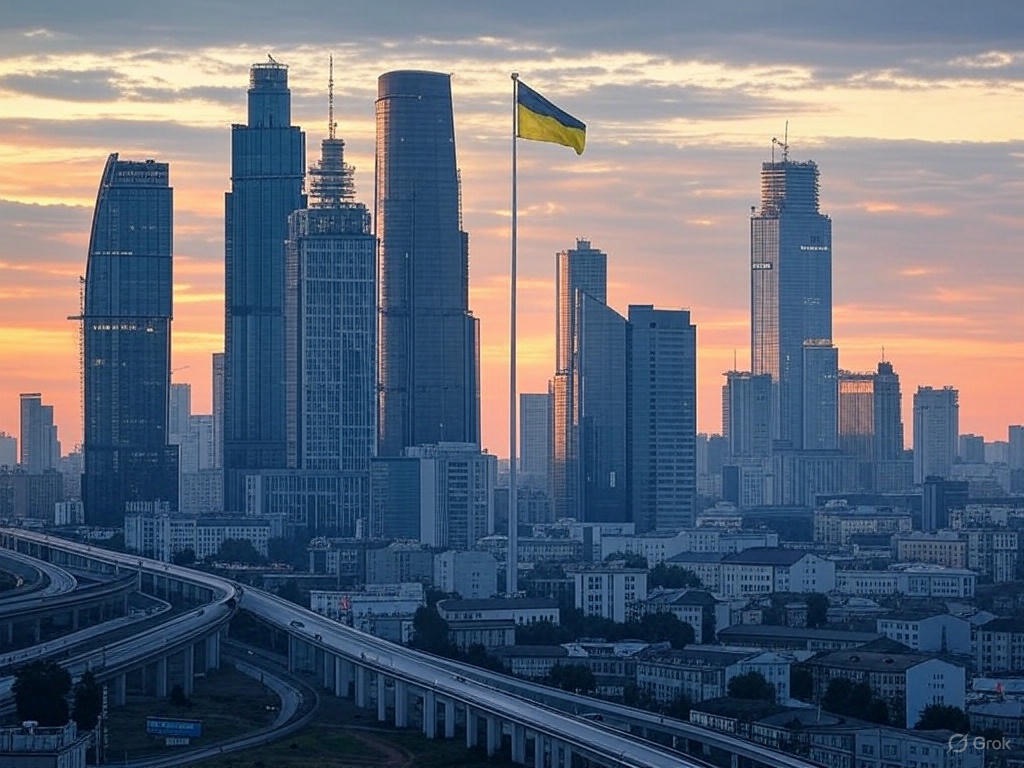Geneva, Switzerland – In the grand theatre of global economics, Switzerland plays a role that consistently baffles and fascinates. For decades, this alpine nation has boasted one of the world’s most formidable currencies, the Swiss franc, a reality that conventional wisdom dictates should cripple export competitiveness. Yet, in a stunning act of economic alchemy, Switzerland thrives as a high-value manufacturing juggernaut, its exports scaling near-historic peaks. This isn’t just an anomaly; it’s a masterclass in strategic resilience, offering profound lessons for a world often quick to seek refuge in currency devaluation.
The story of the Swiss franc is one of relentless, almost defiant, strength. Over the past half-century, whether the US dollar soared or stumbled, whether global economies boomed or busted, the franc has remained a bastion of stability and appreciation. This enduring power, which saw the Swiss National Bank occasionally intervene to temper its rise (and more recently, allow implicit appreciation to combat imported inflation), has become the very bedrock against which Swiss industry sharpens its competitive edge. While a surging currency typically sends shivers down the spines of exporters elsewhere, making their goods pricier abroad, Switzerland paints a dramatically different picture.
Consider this: despite the franc’s secular appreciation, Swiss exports rocketed to $666.60 billion in 2023, a 5.87% jump from 2022, constituting a staggering 75% of the nation’s Gross Domestic Product (GDP). The country commands close to a 2% share of global exports and boasted a trade surplus of $110.06 billion in 2023. How does this landlocked nation, with its notoriously strong currency, pull off such a feat? The answer lies not in fighting the franc, but in embracing the challenge it presents.
Swiss exporters have learned to dance with the “frankenschock,” as surges in the currency’s value are sometimes dubbed. Their response has been a relentless pivot towards innovation, unparalleled quality, and the domination of niche, high-value market segments where price is secondary to perfection. When a central bank policy shift sent the franc soaring in 2015, manufacturers didn’t just trim costs; they accelerated their move into sophisticated exports, inherently less sensitive to currency jitters. Indeed, studies by the State Secretariat for Economic Affairs (Seco) revealed a fascinating adaptation: a 10% appreciation in the franc often spurred a 1-2% improvement in product quality, particularly in R&D-heavy sectors like machinery and watches.
At the heart of this export dynamo is a manufacturing sector that is both resilient and remarkably advanced, contributing around 18% to Swiss GDP – a notably high figure among developed economies, translating to an output of $160.23 billion in 2023. More than half of Swiss exports are classified as “high-tech” (broadly defined to include its dominant chemical and pharmaceutical sectors), a proportion more than double that of the United States. The formal OECD definition, covering aerospace, computers, pharmaceuticals, scientific instruments, and electrical machinery, saw high-technology exports account for 28.84% of Switzerland’s manufactured exports in 2022.
The “Made in Switzerland” label isn’t just a branding exercise; it’s a global shorthand for exceptional quality, precision, and sophistication. This allows Swiss firms to command premium prices, effectively insulating them from currency fluctuations. Harvard’s Growth Lab consistently ranks Switzerland at or near the pinnacle for “economic complexity,” currently holding the 2nd spot. This index reflects a nation’s capacity to produce a diverse range of goods that few others can replicate, a testament to its advanced skills and specialized knowledge.
Driving this export engine are several powerhouse sectors. The chemical and pharmaceutical industries are the undisputed titans, accounting for an astonishing 52% of total exports (CHF 149 billion) in early 2024. This sector alone fuelled 72% of the total growth in Swiss exports between 2000 and 2024. Within this, immunological products like monoclonal antibodies and vaccines have seen exports explode from CHF 1.9 billion in 2000 to CHF 52 billion in 2024. Following this behemoth are the machinery, electrical engineering, and metals (MEM) industries (around 12% of goods exports in 2023), the iconic watchmaking industry (nearly 10%), and precision instruments (about 6.5%).
Such manufacturing prowess doesn’t materialize from thin air. It’s nurtured by an innovation ecosystem that is the envy of the world. Switzerland consistently ploughs a hefty sum into Research & Development – CHF 24.6 billion in 2021, or 3.4% of its GDP, placing it 4th globally. Crucially, about two-thirds of this is funded by the private sector, heavily concentrated in pharmaceuticals, chemicals, and technology.
This investment in innovation is matched by an equally profound investment in people. World-renowned universities like ETH Zurich (ranked 10th globally for engineering in 2025) and EPFL (21st) produce top-tier scientists and engineers. Complementing this is Switzerland’s celebrated Vocational Education and Training (VET) system. Nearly two-thirds of Swiss youth opt for apprenticeships, a “Gold Standard” model that ensures a seamless transition into a workforce crying out for their skills, contributing to the lowest youth unemployment among developed nations. The 2022 PISA scores further underscore this educational foundation, with Swiss 15-year-olds significantly outperforming OECD averages in mathematics, reading, and science.
The results speak for themselves. For an unprecedented 14th consecutive year, Switzerland topped the 2024 Global Innovation Index (GII), excelling in innovation outputs like patents and intellectual property receipts, and boasting world-leading university-industry R&D collaboration. This potent mix translates into staggering productivity: Switzerland generates over $100.5 in GDP per hour worked (2022), outstripping all other top 20 economies. This efficiency allows firms to absorb high domestic labor costs and the strong franc.
Beyond innovation and manufacturing, Switzerland’s economic resilience is buttressed by formidable structural strengths. The nation possesses a Net International Investment Position (NIIP) exceeding 100% of its GDP – a staggering CHF 1,040 trillion as of December 2024. This means Switzerland is a massive net creditor to the world, generating a steady stream of investment income and providing a crucial financial buffer. While private debt is high, the country avoids the “zombie company” plague thanks to efficient insolvency laws that ensure capital is reallocated from failing enterprises to dynamic ones. Capping it all is an enabling environment of economic freedom, profound political stability rooted in direct democracy, and effective governance.
The Swiss story offers a compelling counter-narrative to the often-heard argument, particularly in nations like the United States, that a weaker currency is the remedy for ailing manufacturing. Switzerland demonstrates that for advanced, high-wage economies, such a path can be a short-sighted fix. Devaluation might offer a temporary price advantage, but it risks steering an economy towards producing cheaper goods, not better ones, discouraging the vital long-term investments in R&D and quality that underpin sustained competitiveness. The Swiss model suggests a strong currency can be a crucible, forcing firms to innovate and enhance efficiency to compete on value, not just price.
When compared to economic giants like the US, Germany, or Japan (see table), Switzerland’s distinct path shines. Its manufacturing sector forms a larger GDP share than in the US, its high-tech export intensity is remarkable, and its external financial position is far stronger. While the US debates currency levels to boost exports, Switzerland “earns” its strong franc through relentless value creation.
In conclusion, Switzerland’s economic blueprint isn’t about manipulating exchange rates; it’s about cultivating intrinsic strength. A persistently strong currency, world-leading innovation, high-value manufacturing, exceptional productivity, and robust structural foundations have synergized to create an economic marvel. While the nation must continually adapt to global shifts, its core lesson endures: true, lasting competitiveness for advanced economies is forged in the fires of quality, innovation, and sophistication, not on the anvil of a devalued currency.
Disclaimer: Important Legal and Regulatory Information
This report is for informational purposes only and should not be construed as financial, investment, legal, tax, or professional advice. The views expressed are purely analytical in nature and do not constitute financial guidance, investment recommendations, or a solicitation to buy, sell, or hold any financial instrument, including but not limited to commodities, securities, derivatives, or cryptocurrencies. No part of this publication should be relied upon for financial or investment decisions, and readers should consult a qualified financial advisor or regulated professional before making any decisions. Bretalon LTD is not authorized or regulated by the UK Financial Conduct Authority (FCA) or any other regulatory body and does not conduct activities requiring authorization under the Financial Services and Markets Act 2000 (FSMA), the FCA Handbook, or any equivalent legislation. We do not provide financial intermediation, investment services or portfolio management services. Any references to market conditions, asset performance, or financial trends are purely informational and nothing in this report should be interpreted as an offer, inducement, invitation, or recommendation to engage in any investment activity or transaction. Bretalon LTD and its affiliates accept no liability for any direct, indirect, incidental, consequential, or punitive damages arising from the use of, reliance on, or inability to use this report. No fiduciary duty, client-advisor relationship, or obligation is formed by accessing this publication, and the information herein is subject to change at any time without notice. External links and references included are for informational purposes only, and Bretalon LTD is not responsible for the content, accuracy, or availability of third-party sources. This report is the intellectual property of Bretalon LTD, and unauthorized reproduction, distribution, modification, resale, or commercial use is strictly prohibited. Limited personal, non-commercial use is permitted, but any unauthorized modifications or attributions are expressly forbidden. By accessing this report, you acknowledge and agree to these terms-if you do not accept them, you should disregard this publication in its entirety.



